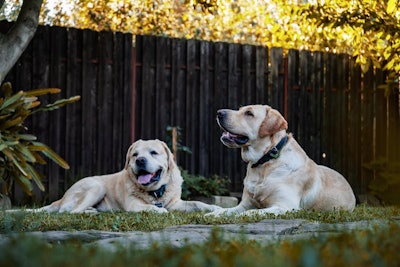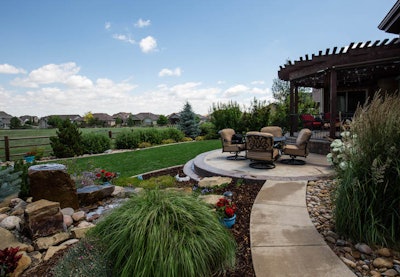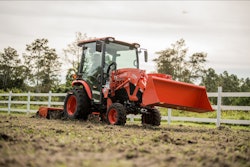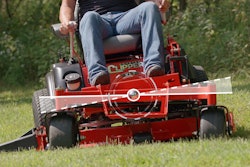 Photo: Pixabay
Photo: PixabayFor many clients, pets are family. So just like you’d design and install a landscape meant for a growing family a certain way, there are best practices when it comes to creating pet-friendly landscapes for these furry family members.
With pet ownership growing, don’t be afraid to offer customers your services in order to create an outdoor space that both they and their animals can enjoy.
“Creating harmonious spaces that are beautiful, safe and utilitarian can certainly be challenging,” says Tim Sweeney, a sales manager with Sweeney’s Custom Landscaping, Inc. based in Villa Park, Illinois. “I think the biggest challenge is the same as any other landscape and that is finding out what the space will be used for – play, dogs, cats, lounging, escape – and keeping that in mind throughout the process.”
Safety first
While creating a beautiful, yet safe landscape for your customer’s pet may be a challenge, it is certainly not impossible.
One of the most obvious safe practices to implement is the planting of non-toxic plant material. A number of common and popular plants such as lilies, daisies, tulips, English ivy, foxgloves, daffodils, hydrangeas are all toxic to pets.
For a compilation of both toxic and non-toxic plants for dogs and cats, check this resource on the American Society for the Prevention of Cruelty to Animals (ASPCA) website.
Even if you don't think your pet will munch on plants, Kim Sweeney, the blogger for Sweeney’s, says it’s always best to play it safe and never use any toxic plant material.
“There is no 100 percent effective way to stop pets from eating toxic plants, so don’t use them,” she says. “Plain and simple.”
Other safety elements to consider are not installing plants with thorns, not using cocoa mulch, which is toxic to dogs, and reducing chemical applications when dealing with weeds.
“There is no such thing as a weed-free yard, despite everyone’s best efforts and most effective chemicals,” says Kim Sweeney. “It’s important to remember that nature reigns supreme. There are chemicals that are safe for pets, but there will always be weeds. Learning to live with a few is the real balance.”
Design elements for a pet paradise
Once you have the safety aspect taken care of, then you can start focusing on adding elements that will make the space enjoyable.
The first question is if you are dealing with dogs or cats in your pet-friendly equation.
“This can change the design quite a bit, as cats do not need as much open space for playing fetch or chasing in the landscape,” says Tim Sweeney. “Our cats do like to hide and lounge in the landscape; ornamental grasses make great hidings places. For the larger dogs, keep in mind that they can cause damage to smaller or brittle plants. Larger open spaces for the larger more active dogs make sense.”
If landscaping for dogs, Kim Sweeney advises asking your clients questions about their pet’s behaviors such as if they are diggers, if they use a certain area of the yard for the bathroom or if they like to eat everything.
“We have had some customers letting us know that their dogs love to eat smaller rocks and larger wood chips, so we made sure to keep these elements out,” she says.
In the case of digger dogs, this is often a case of the dog trying to keep cool or boredom. Tim Sweeney suggests providing shaded areas or open play areas to keep the dog entertained.
“Most of the dogs we had heard were diggers either grew out of it or after they were given more toys and attention, the digging stopped,” Tim Sweeney says.
Dog runs are also a good addition for pups that have a penchant for patrolling the property.
Both cats and dogs appreciate shady spots protected from the sun, as it’s much easier for dogs to overheat and for cats to become sunburned. If you opt to include a water feature to help pets stay cool and hydrated, make sure it is constructed so they can safely exit it.
“Drainage is another important area that is overlooked,” Tim Sweeney says. “No one likes dealing with muddy paws weeks after a rain event. Extra points are if you can include an area to help rinse off muddy paws; it can be as simple as using some pond pebbles near a hose.”
Petscaping materials
When it comes to what landscape material to work with, it’s a good call to think of how certain products will feel under sensitive paws. Remember that hardscaping materials can heat up and unlike people, pets aren't wearing anything to protect their paws.
Lava rock can be rough on pets’ feet, so Tim Sweeney suggests using hardscape material such as flagstone, river rock, pavers and some mulches for pet paths.
“It can help to know the size or weight of the pet to know how much traffic and abuse the path may take,” says Tim Sweeney. “What we have found over the years that paths are more of a suggestion for our furry friends, so make sure the path works best for you first.”
 Photo: Alpine Gardens
Photo: Alpine GardensAs for what to do when it comes to dogs needing to use the bathroom and the inevitable urine burns that come with it, Kim Sweeney suggests using Kentucky bluegrass, turf-type tall fescues and a variety of drought and salt-tolerant plants that are more tolerant of dog urine.
Another option is to talk to your clients about artificial turf. It has come a long way in recent years. Even if you just have one small area of the property that uses artificial turf, this can become your pets' spot to do their business and run around.
While it can require a little bit of extra forethought and planning, taking pets into consideration when working on your clients' landscapes will be an appreciated endeavor. Since most people really do think about their cats and dogs as members of the family, they want to enjoy time outside with them, too. By implementing some of these ideas, you can help ensure that your clients' outdoor living areas are safe and enjoyable for all members of the family.











